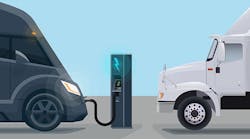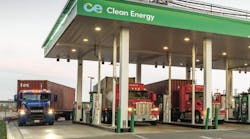After we first published our High-Potential Regions For Electric Truck Deployments in August, we got questions from several interested parties about whether we had similar information for Canada – a very legitimate question since we are the North American Council for Freight Efficiency.
To be clear, we do not ignore our friends to the north and, in fact, in both Run on Less 2017 and Run on Less Regional, we tried very hard to get fleets and drivers from Canada to participate in the roadshow. Unfortunately, we were not successful, but we will continue our efforts when we launch other Run on Less demonstrations. We are also quite active with multiple projects with NRCan and others as well as have close relationships with many Canadian fleets.
For now, let’s get back to the regions that have high potential for electric truck deployment. Jessie Lund, study author and senior associate at Rocky Mountain Institute, went back to the drawing board to determine in which areas of Canada electric truck deployment made the most sense. The team applied the same three-part framework it used to evaluate U.S. regions to look at opportunities in Canada.
As a reminder, the framework looked at these three factors:
- Technology – Identify the regions that are most favorable to the unique attributes of the technology itself.
- Need – Identify the regions that exhibit the greatest need for the technology.
- Support – Identify the regions that provide the most support for the technology.
At the intersection of these three factors is what we determined was the highest potential for electric truck deployment.
As a result of the new work, we have defined the following areas as ripe for electric truck development. Some of these areas were in our original report, others have been added as we fanned out our exploration to include the Canadian market:
- Northern California
- Southern California
- Texas Triangle
- Cascadia (stretching from Portland, Oregon through Seattle and into Vancouver, Canada),
- Colorado Front Range
- Northeast U.S.
- Greater Toronto Area
- Greater Montreal
We encourage fleets, when looking at their own operations, to consider not just which regions are best suited for electric trucks, but which represent the strongest competitive advantage over diesel.
And perhaps most importantly, the successful deployment of electric trucks is going to take a combined effort among fleets, policymakers, regulators, utilities and other stakeholders in the various regions.
_______________________
Michael Roeth has worked in the commercial vehicle industry for nearly 30 years, most recently as executive director of the North American Council for Freight Efficiency. He currently serves on the second National Academy of Sciences Committee on Technologies and Approaches for Reducing the Fuel Consumption of Medium and Heavy-Duty Vehicles and has held various positions in engineering, quality, sales and plant management with Navistar and Behr/Cummins.



